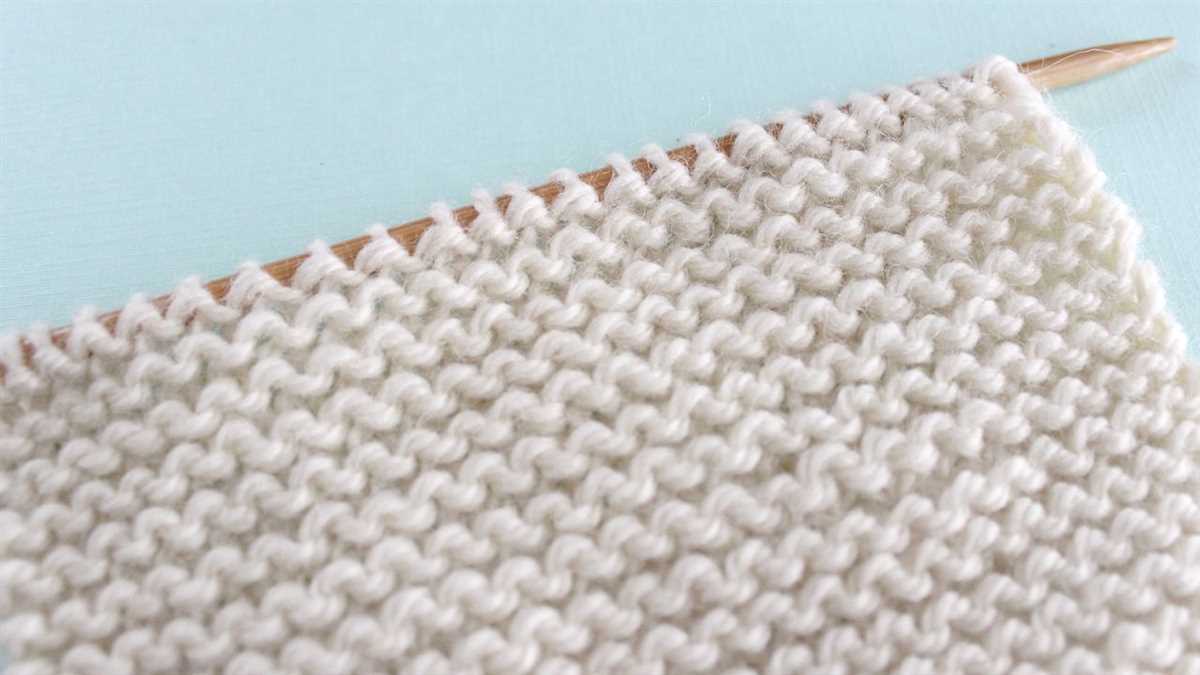
The garter stitch is one of the most basic and commonly used knitting patterns. It is characterized by a series of rows worked in plain knit stitches, resulting in a textured fabric with ridges running both horizontally and vertically. This pattern is often used by beginners as it is simple to learn and creates a dense and reversible fabric.
To create the garter stitch, you will need to knit every stitch in every row. This means that you do not need to alternate between knit and purl stitches like in other patterns such as the stockinette stitch or the rib stitch. The simplicity of the garter stitch makes it a great choice for scarves, blankets, and other cozy accessories.
One of the advantages of the garter stitch is that it does not curl like other knitting patterns tend to do. This is because the fabric is completely reversible and the tension is distributed evenly throughout. As a result, the edges of your project will lay flat without any rolling.
Whether you are a beginner or an experienced knitter, the garter stitch is a versatile and timeless pattern that can be used for a wide range of projects. Its simplicity and durability make it a popular choice among crafters of all skill levels.
What is the Garter Stitch Knit Pattern?
The garter stitch knit pattern is one of the most basic and commonly used stitch patterns in knitting. It is characterized by a ridged texture that is created by alternating rows of knit stitches. The resulting fabric is reversible and looks the same on both sides.
To create the garter stitch, you simply knit every row. This means that you knit one row, and then knit another row, and continue knitting every row until the desired length is reached. The knit stitch creates a series of raised ridges on both sides of the fabric, giving it a textured appearance.
The garter stitch is commonly used for a variety of knitting projects, including scarves, blankets, and dishcloths. It is especially popular for beginner knitters, as it is easy to learn and creates a simple yet attractive finished product. The stitch pattern is also great for showcasing the texture and color of the yarn being used.
One of the benefits of the garter stitch is its flexibility. It naturally creates a fabric that is thick and warm, making it ideal for cold weather accessories. However, it can also be used with lighter weight yarns to create more delicate and lightweight garments. The garter stitch is also great for creating a stable and stretchy fabric, making it useful for projects that require some elasticity.
Overall, the garter stitch knit pattern is a versatile and timeless stitch that is loved by knitters of all skill levels. Its simplicity and texture make it a go-to choice for many knitting projects, and its reversible nature adds to its appeal. Whether you’re a beginner or an experienced knitter, the garter stitch is a staple stitch pattern that is sure to be useful in your knitting repertoire.
Characteristics of the Garter Stitch
The garter stitch is a simple knitting pattern that creates a bumpy, textured fabric. It is one of the most basic stitch patterns in knitting and is often used by beginners to practice their knitting skills. The garter stitch is created by knitting every row, resulting in a series of ridges on the fabric.
One of the key characteristics of the garter stitch is its reversible nature. Unlike other stitch patterns that have a distinct “right” and “wrong” side, the garter stitch looks the same on both sides. This makes it a versatile choice for projects such as scarves and blankets, where both sides of the fabric are visible.
The garter stitch is also known for its ability to create a stretchy fabric. The ridges formed by knitting every row give the fabric an elasticity that is often desired in accessories like hats and headbands. Additionally, the stretchiness of the garter stitch makes it forgiving for beginner knitters who may not have consistent tension.
Another characteristic of the garter stitch is its ability to lay flat. Unlike some other stitch patterns that tend to curl or roll at the edges, the garter stitch fabric stays flat and does not require any additional finishing techniques to keep it in shape. This makes it a practical choice for projects that need to lie flat, such as dishcloths or place mats.
The garter stitch is a versatile and beginner-friendly knitting pattern with its reversible nature, stretchy fabric, and ability to lay flat. Whether you’re a beginner learning to knit or an experienced knitter looking for a simple yet effective stitch pattern, the garter stitch is a classic choice.
How to Create the Garter Stitch
The garter stitch is a basic knitting pattern that creates a fabric with a ridged texture. It is achieved by knitting every row in every row. This stitch is commonly used for scarves, blankets, and other projects where a sturdy, reversible fabric is desired.
To create the garter stitch, you will need a pair of knitting needles and yarn of your choice. Start by making a slipknot and placing it on one of the needles. Then, insert the other needle through the loop from left to right and yarn over, pulling the new loop through the old loop. This is called a knit stitch. Repeat this process until you have cast on the desired number of stitches.
Once you have cast on your stitches, you can begin working the garter stitch pattern. Simply knit every row, making sure to insert the needle through the loop from left to right and pulling the yarn through to create a new stitch. Continue knitting every row until you have reached the desired length of your project.
- Make a slipknot and place it on one of the needles
- Insert the other needle through the loop, yarn over, and pull through to create a new stitch
- Repeat the previous step until you have cast on the desired number of stitches
- Knit every row by inserting the needle through the loop and pulling the yarn through to create a new stitch
- Continue knitting every row until you have reached the desired length of your project
The garter stitch creates a fabric that is completely reversible, with ridges on both sides. It is a great stitch for beginners as it is simple to learn and creates a sturdy fabric. Once you have mastered the garter stitch, you can experiment with different yarns, colors, and stitch patterns to create unique and beautiful projects.
History of the Garter Stitch
The garter stitch is one of the most basic knitting patterns and has a long history in the world of knitting. This stitch pattern is used to create a fabric that is reversible and has a ridged texture. It is called the garter stitch because it was commonly used in the making of garters, which were necessary accessories to hold up stockings in the past.
Knitting itself has been around for centuries, with the earliest known knitted items dating back to the 3rd century AD in Egypt. However, the garter stitch specifically became popular in Europe during the Middle Ages. Knitting was primarily done by men during this time, as it was seen as a form of craftsmanship and a sign of social status. Garters made with the garter stitch pattern were highly prized and often embellished with intricate designs.
The garter stitch remained popular throughout the centuries and is still widely used today. It is a foundational stitch pattern that is often used for borders, edges, and scarves. Its simplicity and versatility make it a favorite among both beginner and experienced knitters. The garter stitch is also often combined with other stitch patterns to create more complex designs and textures.
Today, the garter stitch can be seen in various knitting projects, from traditional garments to modern accessories. Its rich history and timeless appeal have made it an integral part of the knitting world, ensuring its continued popularity for years to come.
Why Use the Garter Stitch?
The garter stitch is a basic knitting pattern that is created by knitting every stitch, whether on the right side or the wrong side of the work. It is often recommended for beginners as it is simple to learn and creates a fabric that is reversible and lies flat with no curling at the edges.
One of the main advantages of using the garter stitch is its versatility. It can be used to create a variety of different items, such as scarves, blankets, and dishcloths. The fabric created by the garter stitch is also stretchy and sturdy, making it well-suited for items that need to withstand regular use and wear.
The garter stitch also creates a textured fabric with ridges running horizontally. This texture adds visual interest to the finished piece and can make simple designs look more intricate. Additionally, the garter stitch is great for showcasing the natural beauty of certain yarns, as it does not compete with complex stitch patterns or colorwork.
When using the garter stitch, it is important to keep in mind that it does consume more yarn than other stitch patterns, as each row uses more yarn than a typical knit stitch. However, the simplicity and versatility of the garter stitch make it a popular choice among knitters of all skill levels, and it is a satisfying pattern to work on for both beginner and experienced knitters alike.
Garter Stitch vs. Stockinette Stitch
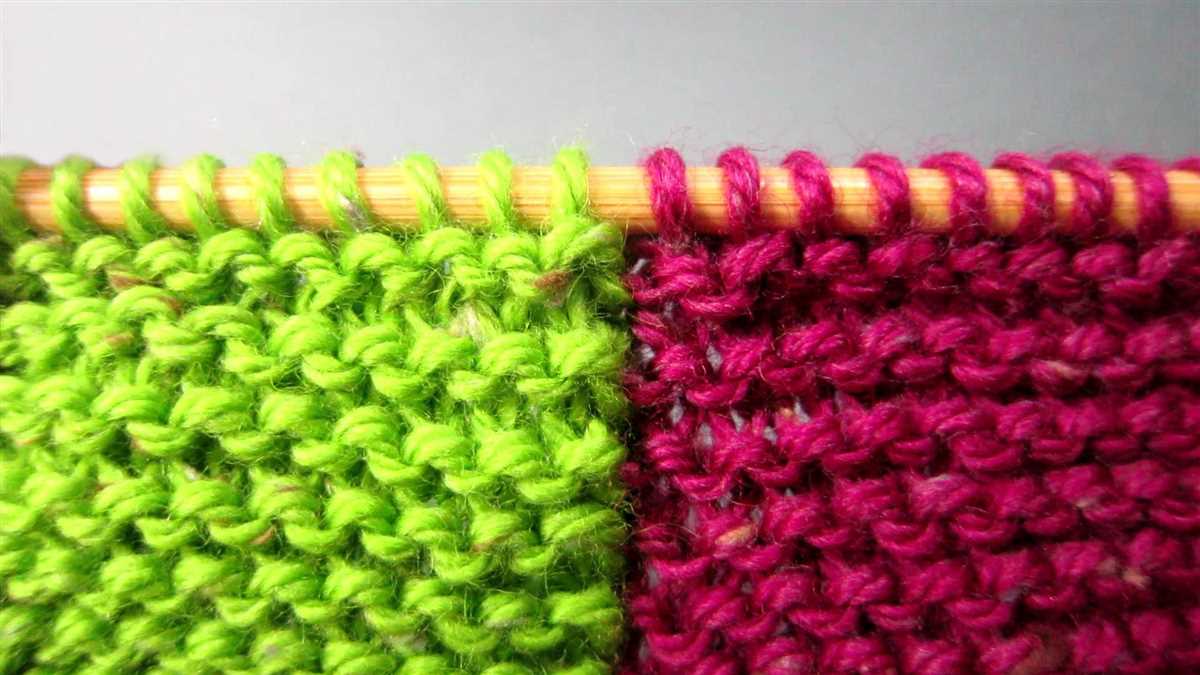
The garter stitch and the stockinette stitch are two commonly used knitting patterns. While both patterns are used to create knitted fabric, they have distinct characteristics and produce different results.
Garter stitch: The garter stitch is a simple pattern that is commonly used by beginners. It is created by knitting every row, resulting in a fabric with ridges on both sides. The pattern is reversible, meaning that both sides of the fabric look the same. The garter stitch has a bouncy and textured appearance, making it suitable for scarves, blankets, and other cozy projects. It is also commonly used for borders and edges in knitting projects.
Stockinette stitch: The stockinette stitch is another basic knitting pattern that is widely used. It is created by knitting one row and purling the next row, alternating between the two stitches. The right side of the fabric has a smooth and flat appearance, while the wrong side has a bumpy texture. The stockinette stitch has a more polished and refined look compared to the garter stitch. It is commonly used for garments such as sweaters, hats, and socks, as well as for creating decorative patterns and textures.
In terms of versatility, the garter stitch is often favored for its simplicity and ease of knitting. It is a great choice for beginners or when you want to create a project that requires minimal shaping. On the other hand, the stockinette stitch offers a more polished and professional look, making it suitable for garments and projects that require a smoother finish.
- The garter stitch is reversible, while the stockinette stitch is not.
- The garter stitch has a bouncy and textured appearance, while the stockinette stitch has a smooth and flat appearance.
- The garter stitch is often used for scarves, blankets, and borders, while the stockinette stitch is commonly used for garments.
- The garter stitch is easier for beginners, while the stockinette stitch requires a bit more skill and attention.
Variations of the Garter Stitch
The garter stitch is one of the most basic and versatile knitting patterns, and it can be used to create a variety of different designs and textures. Here are some variations of the garter stitch that you can try:
Reverse Garter Stitch
The reverse garter stitch is essentially the same as the regular garter stitch, but with a twist. Instead of knitting every row, you purl every row. This creates a bumpy texture on both sides of the fabric, rather than the ridged texture of the regular garter stitch.
Garter Rib Stitch

The garter rib stitch is a combination of the garter stitch and the rib stitch. In this pattern, you alternate between knitting and purling stitches within each row. This creates a ribbed texture that adds some visual interest to your knitting.
Garter Check Stitch
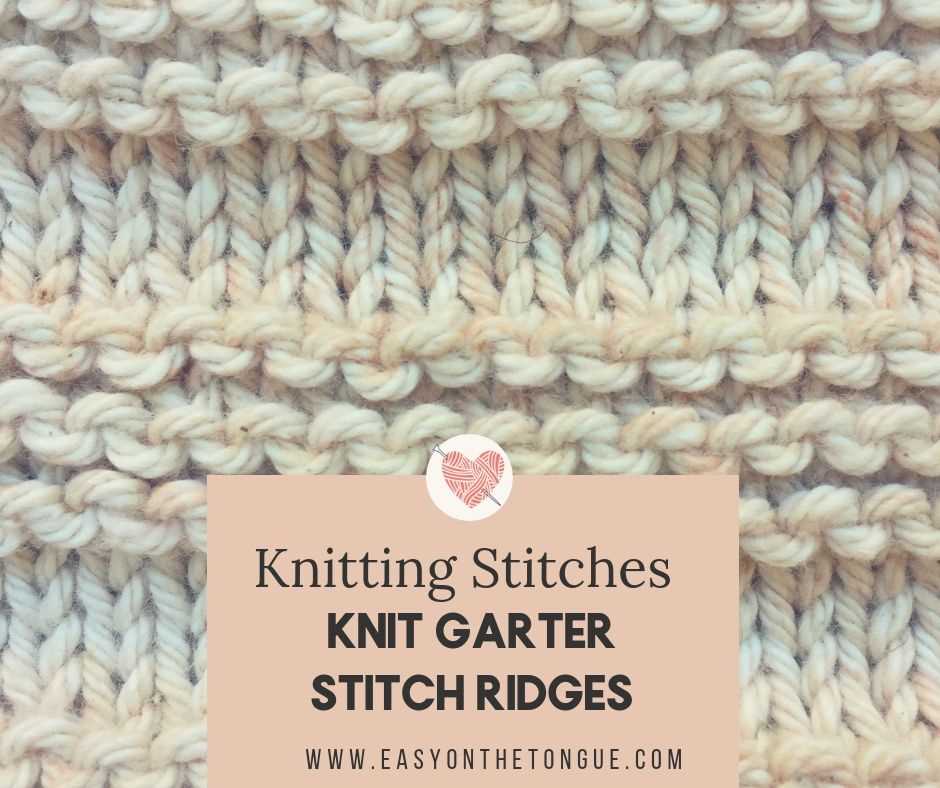
The garter check stitch is a variation of the garter stitch that uses slipped stitches to create a checkered pattern. To create this pattern, you alternate between knitting stitches and slipping stitches purlwise with the yarn in front. This creates a textured grid-like pattern on the fabric.
Garter Eyelet Stitch
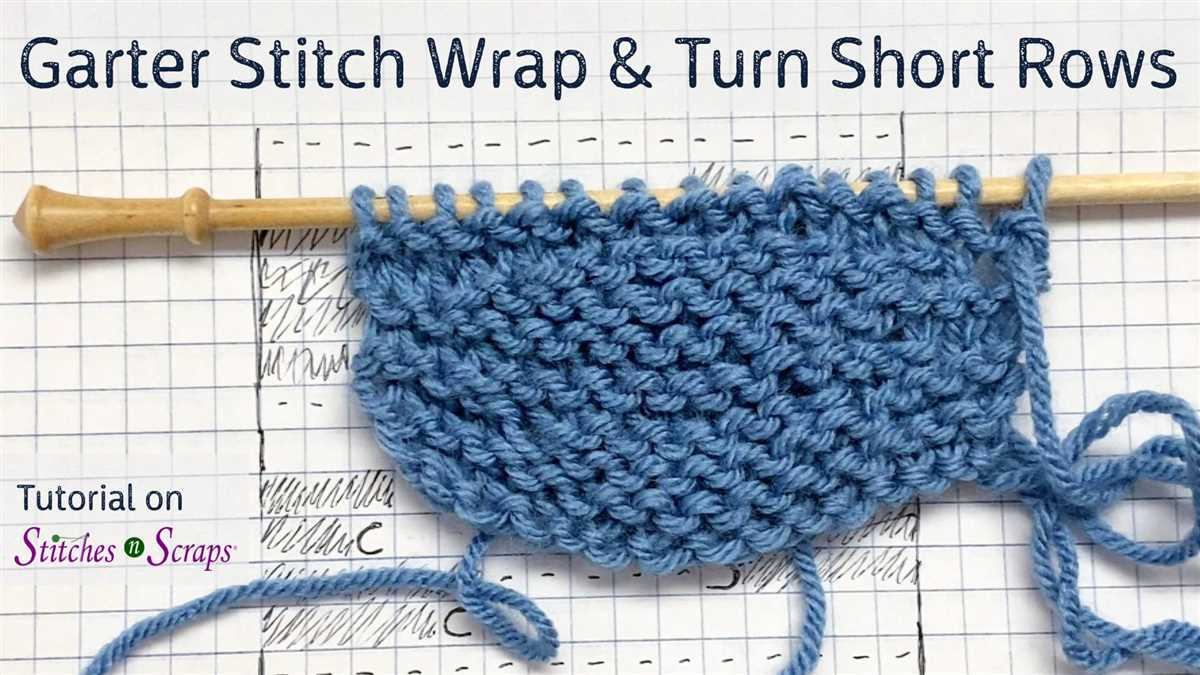
The garter eyelet stitch combines the garter stitch with yarnovers to create a lacy effect. To create this stitch pattern, you knit a certain number of stitches, then yarn over, then knit the next two stitches together. This creates small eyelet holes in the fabric, adding a delicate touch to your knitting.
Mock Garter Stitch
The mock garter stitch is a pattern that mimics the look of garter stitch, but is actually created using a combination of knits and purls. In this pattern, you alternate between knitting one row and purling one row. This creates a similar ridged texture as the garter stitch, but with a different method of creating it.
These are just a few examples of the many variations of the garter stitch that you can experiment with in your knitting projects. Have fun trying out different patterns and textures to create unique and beautiful knitted items!
Ribbed Garter Stitch
The ribbed garter stitch is a variation of the traditional garter stitch that incorporates ribbing into the pattern. It is created by alternating knit and purl stitches in a specific sequence, which creates a ribbed texture. This stitch pattern is commonly used in a variety of knitting projects, including scarves, hats, and sweaters.
To create the ribbed garter stitch, you will need to know how to knit and purl. The most common sequence for the ribbed garter stitch is to knit two stitches, then purl two stitches, and repeat this pattern across the row. This creates a ribbed texture that is both visually appealing and adds elasticity to the fabric.
The ribbed garter stitch is a great choice for projects that require a stretchy and flexible fabric, such as hats or gloves. It is also commonly used for cuffs and borders on garments, as the ribbed texture helps to prevent the edges from rolling or curling. Additionally, the ribbed garter stitch can be used to create interesting patterns when combined with other stitch patterns, such as cables or lace.
When working with the ribbed garter stitch, it is important to pay attention to your tension. Consistent tension will ensure that the ribbing appears even and uniform throughout the project. Additionally, it is important to consider the yarn and needle size you are using, as this can affect the overall appearance and drape of the finished piece.
In summary, the ribbed garter stitch is a versatile and popular stitch pattern that adds texture and elasticity to knitted projects. Whether you are a beginner or an experienced knitter, this stitch is a great way to add visual interest to your projects and create unique and beautiful fabric.
Basketweave Garter Stitch
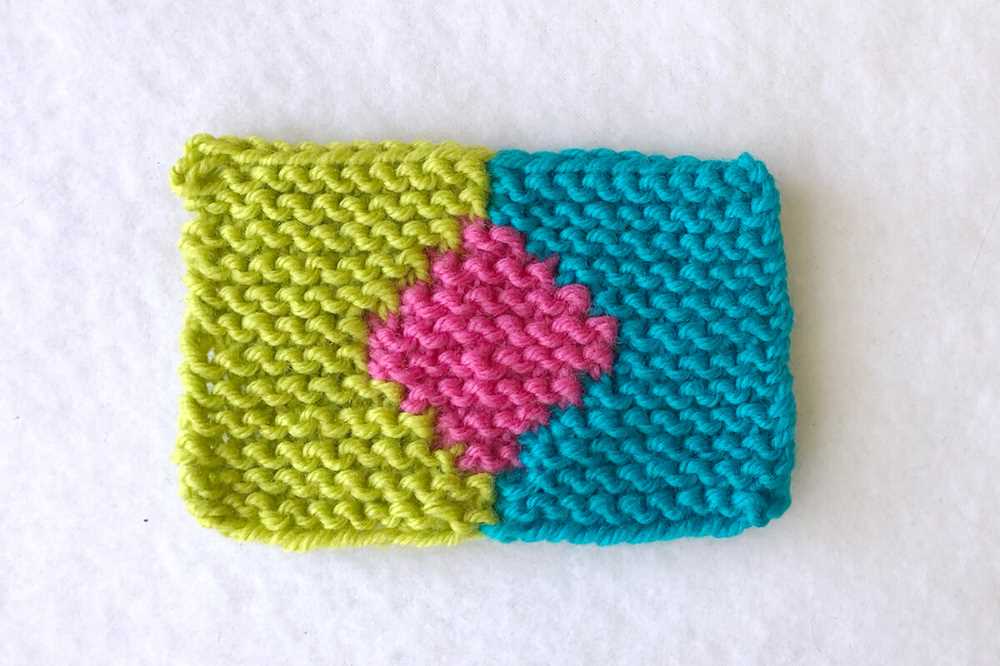
The basketweave garter stitch is a variation of the traditional garter stitch pattern that creates a textured look resembling a woven basket. It is achieved by alternating blocks of knit and purl stitches in a specific pattern.
To create the basketweave garter stitch, you will need to work with a multiple of 10 stitches plus 5. The pattern consists of four rows, which are repeated to form the desired length.
- Row 1 and 3: Knit all stitches.
- Row 2: Knit the first 5 stitches, purl the next 5 stitches. Repeat this pattern to the end of the row.
- Row 4: Purl the first 5 stitches, knit the next 5 stitches. Repeat this pattern to the end of the row.
This alternating pattern of knit and purl stitches creates a textured design that resembles the weave of a basket. The result is a visually interesting and unique fabric that can be used for a variety of projects such as scarves, blankets, and dishcloths.
When working with the basketweave garter stitch, it is important to maintain an even tension to ensure that the textured pattern is evenly distributed. Additionally, blocking the finished project may help to enhance the appearance of the stitch pattern.
Garter Stitch Lace
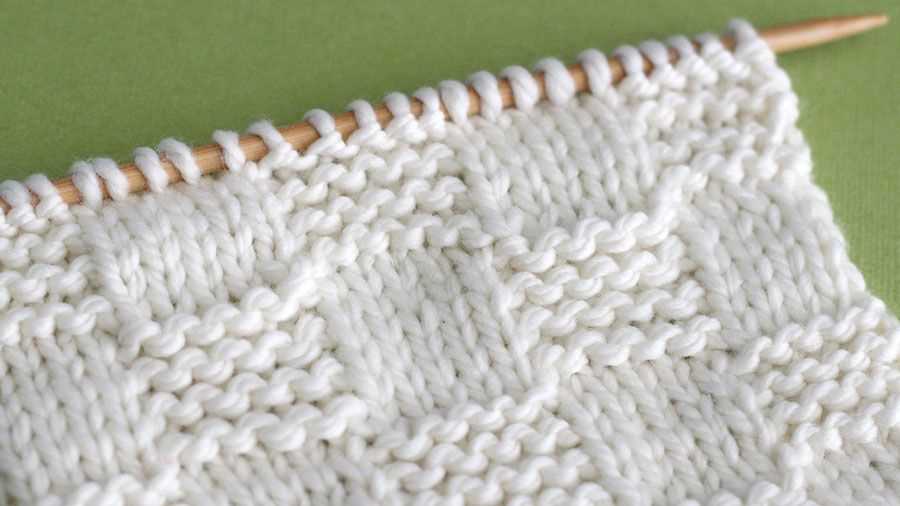
The garter stitch lace is a variation of the traditional garter stitch pattern, which creates a textured fabric with ridges and bumps. While the garter stitch is typically worked by knitting every stitch on every row, the garter stitch lace introduces lace motifs and eyelets into the pattern, adding an element of delicacy and intricacy to the fabric.
To create the garter stitch lace, knitters alternate between rows of stockinette stitch and rows of lace pattern. The lace pattern can be as simple or as complex as desired, ranging from basic eyelets to more intricate lace motifs. The combination of the stockinette stitch and the lace pattern creates a fabric with a beautiful textured effect, with the lace motifs standing out against the smooth background.
The garter stitch lace is a versatile pattern that can be used for a variety of knitting projects, such as scarves, shawls, and even sweaters. It is a popular choice for lacy and lightweight garments, as the garter stitch lace adds a touch of elegance without being too heavy or bulky. The combination of the garter stitch and lace motifs also makes it a great choice for beginner knitters who want to try their hand at lace knitting.
- Benefits of Garter Stitch Lace:
- Creates a textured fabric with a delicate and intricate look
- Can be used for various knitting projects
- Offers a lightweight and lacy option for garments
- Great for beginner knitters who want to try lace knitting
Overall, the garter stitch lace is a beautiful and versatile pattern that adds a touch of elegance to any knitting project. Whether you’re a beginner or an experienced knitter, the garter stitch lace is a fun pattern to experiment with and create stunning, textured fabrics.
Tips for Working with the Garter Stitch
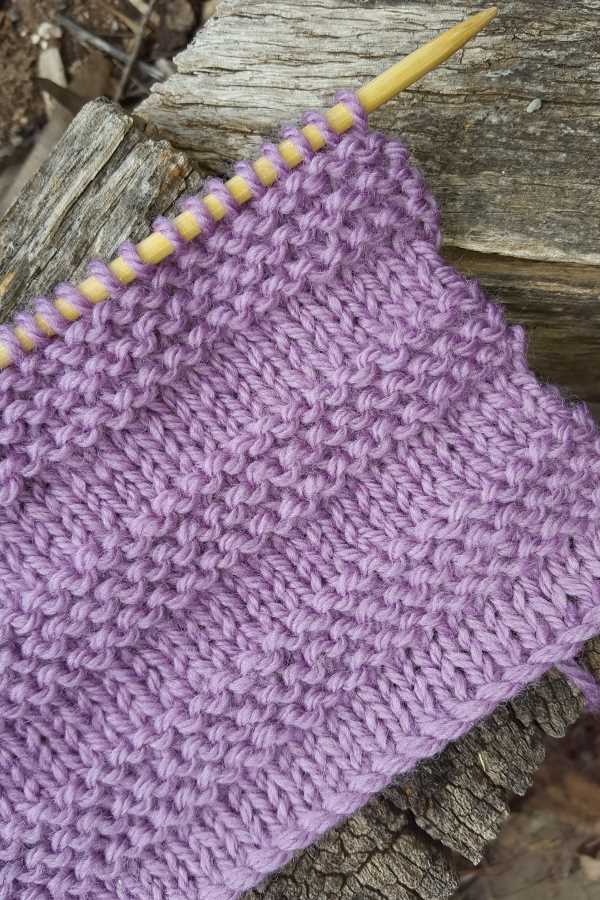
The garter stitch is one of the most basic and versatile knitting patterns. It is created by knitting every row, resulting in a ridged fabric that lies flat and is reversible. Here are some tips to help you make the most of this simple yet elegant stitch:
1. Choose the Right Needles and Yarn
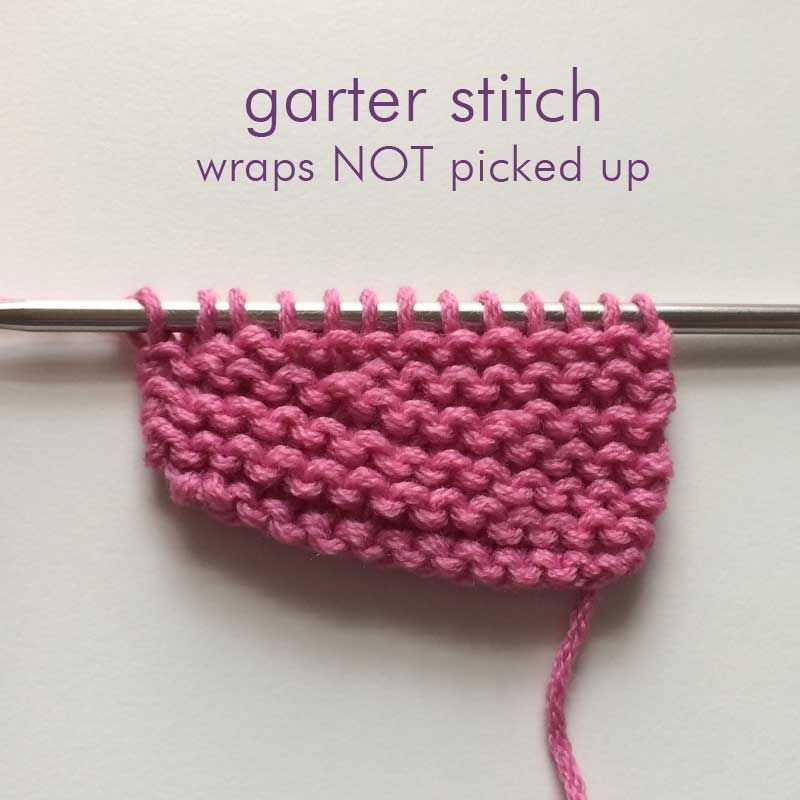
When working with the garter stitch, it is important to choose the right needles and yarn to achieve the desired drape and texture. For a tighter fabric, use smaller needles and a finer yarn. If you prefer a looser and more airy fabric, opt for larger needles and a bulkier yarn.
2. Create Neat Edges
The edges of a garter stitch piece can sometimes appear messy or uneven. To create a neater edge, consider adding selvedge stitches. These are extra stitches at the beginning and end of each row that are slipped without being knitted. This will result in a smoother edge and make it easier to pick up stitches for finishing.
3. Experiment with Color
The garter stitch is an excellent pattern for showcasing color variations and gradient yarns. Experiment with different color combinations and striping techniques to create unique and visually interesting projects. You can also try color blocking, where you use different colors for different sections of your piece.
4. Embrace Mistakes
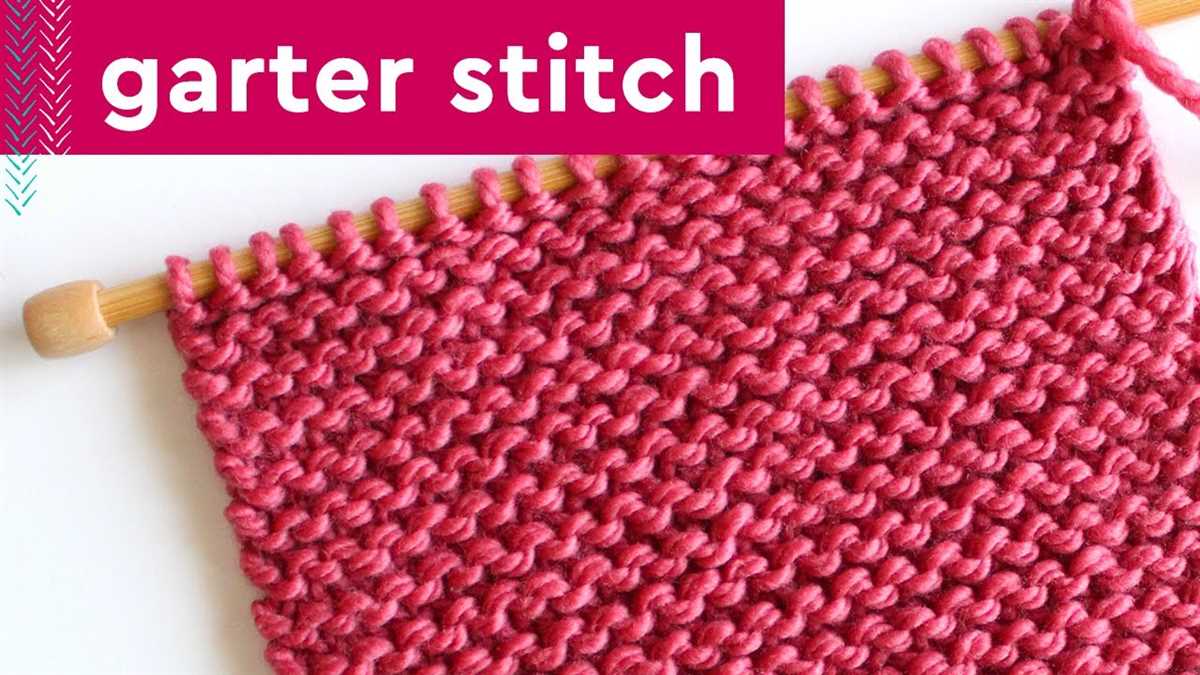
Mistakes happen, even to the most experienced knitters. With the garter stitch, it is easy to fix mistakes without having to rip back rows. If you notice a mistake, simply drop the stitch down to the row below and then pick it up again correctly. This way, you can quickly correct errors without having to undo all your hard work.
By keeping these tips in mind, you can confidently work with the garter stitch and create beautiful and versatile knitted pieces.
Garter Stitch Patterns
The garter stitch is one of the most basic knitting stitches that is commonly used in knitting patterns. It is created by knitting every stitch, both on the right and wrong sides, resulting in a fabric with ridges or horizontal rows. Garter stitch patterns can be simple or intricate, depending on the design and combination of stitches used.
One of the simplest garter stitch patterns is the classic garter stitch scarf. This pattern is perfect for beginners as it only requires knowledge of the basic knit stitch. The scarf is worked in rows, knitting every stitch on both the right and wrong sides, creating a warm and cozy fabric.
Another popular garter stitch pattern is the garter stitch hat. This pattern can be customized with various colors, stripes, or even textured stitches to add visual interest. The garter stitch pattern is ideal for hats as it gives the fabric extra stretch and elasticity.
Garter stitch patterns can also be used to create beautiful accessories such as shawls, cowls, and fingerless gloves. These patterns often incorporate lace or cable stitches to add complexity and texture. The garter stitch acts as a foundation for the pattern and provides a nice contrast to the decorative stitches.
In addition to flat knitting, garter stitch patterns can be used in circular knitting projects such as blankets and sweaters. When working in the round, the garter stitch is created by knitting one round and purling the next. This technique creates a seamless and visually appealing fabric.
Overall, garter stitch patterns are versatile and can be used to create a wide range of knitting projects. Whether you are a beginner or an experienced knitter, garter stitch patterns offer endless possibilities for creative expression.
Projects You Can Make with the Garter Stitch
In addition to being one of the most basic and versatile knitting patterns, the garter stitch is also great for making a variety of different projects. Whether you’re a beginner knitter looking for simple projects or an experienced knitter wanting to experiment with new techniques, the garter stitch offers plenty of options.
Here are some project ideas that you can make using the garter stitch:
- Scarves: The garter stitch creates a lovely texture, making it perfect for scarves. You can choose different colors and yarn weights to create unique designs.
- Baby Blankets: The garter stitch is an excellent choice for baby blankets as it creates a warm and cozy fabric. You can make simple garter stitch blankets or combine it with other stitch patterns.
- Dishcloths: Garter stitch dishcloths are a quick and easy project that is perfect for practicing your knitting skills. They also make great gifts!
- Hats: Garter stitch hats are cozy and comfortable to wear. You can easily customize them by adding stripes or other stitch patterns to make them unique.
- Bags and Totes: Using the garter stitch, you can create sturdy and durable bags or totes. They are great for carrying your knitting projects or as everyday bags.
These are just a few examples of what you can make with the garter stitch. The simple pattern allows for endless possibilities and customization. Don’t be afraid to experiment and try new things with this versatile stitch!
Conclusion
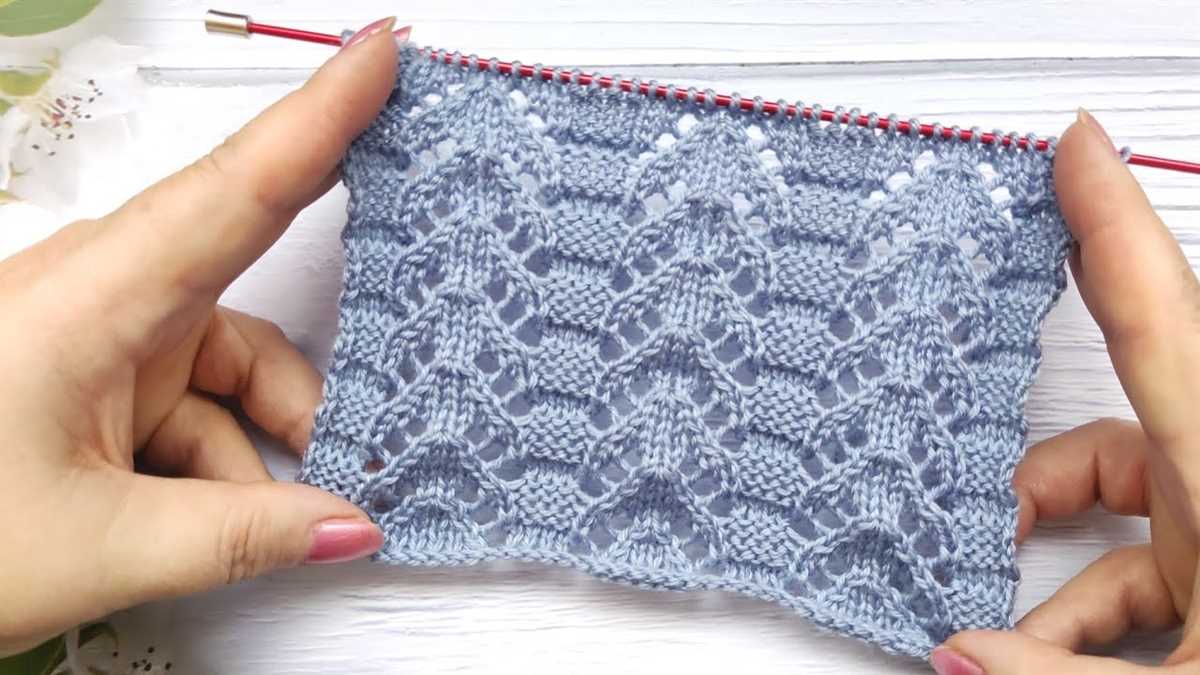
The garter stitch knit pattern is a basic but essential technique in knitting. Whether you’re a beginner knitter or an experienced one, knowing how to create the garter stitch opens up a whole world of project possibilities. From scarves and baby blankets to hats and bags, the garter stitch can be used to create a wide range of items. Its simplicity makes it great for practicing different techniques and experimenting with new stitch patterns. So grab your knitting needles and some yarn, and start exploring the endless possibilities of the garter stitch!